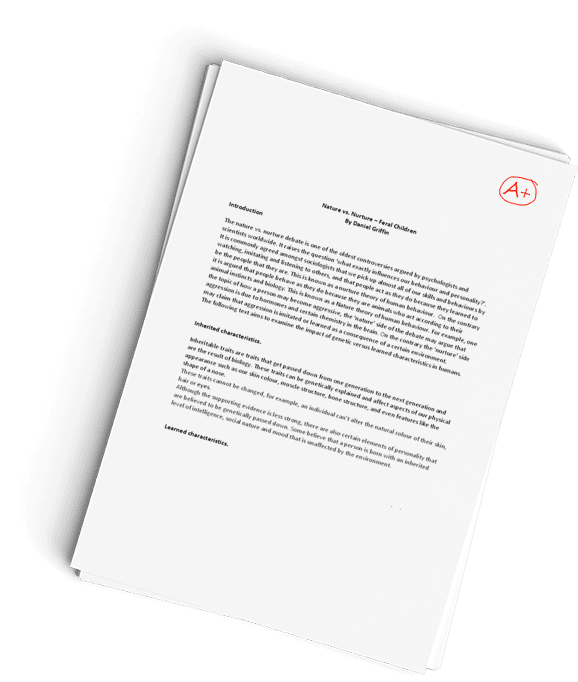INTL613 American Public University Homeland Security Discussion
Responses should be a minimum of 250 words and include direct questions. You may challenge, support or supplement another students answer using the terms, concepts and theories from the required readings. Also, do not be afraid to respectfully disagree where you feel appropriate; as this should be part of your analysis process at this academic level.
Forum posts are graded on timeliness, relevance, knowledge of the weekly readings, and the quality of original ideas. Sources utilized to support answers are to be cited in accordance with the APA writing style by providing a general parenthetical citation (reference the author, year and page number) within your post, as well as an adjoining reference list. Refer to grading rubric for additional details concerning grading criteria.
Respond to Kaitlin:
September 11, 2001 was the day that changed our nations security forever, it was the day that lead to the creation of the Department of Homeland Security, and the day that pushed our nation to the intelligence reform we were longing for. Its this event of September 11, 2001 that stimulated the largest reorganization of the intelligence community since 1947 (Burch, n.d, pg. 1). The Intelligence Community and the Homeland Security enterprises are essential variables in combating the war against terrorism. As Larry Thompson (2003), Former Deputy Attorney General, states in his testimony the first step in disrupting terrorist plots and preventing terrorist attacks is obtaining information about the operations of terrorist groups and the activities of individual terrorists, both inside and outside of our nations borders. He goes on to mention that intelligence collection is only the first step in combating terrorism and how its just a small piece of the puzzle, that it takes many pieces to help formulate the bigger picture. This same notion and metaphor goes for the Intelligence Community; great importance lies not only in the process of collecting intelligence on terrorist activities but as well as ensuring that information is shared across all government agencies. While there was a disconnection between connecting the dots and information sharing prior to 9/11, it is with time that this action has grown into place amongst these enterprises.
The reorganization and reform lead to several changes, such as the creation of the Department of Homeland Security and the revamping of the Federal Bureau of Investigations (FBI) intelligence capability, that emphasized on information sharing and the development of state and local fusion centers that helped address the domestic intelligence gap (Burch, n.d, pg.1). While there are great strides to be made from the reorganization and reform, they bring about a few concerns relating directly to domestic intelligence. One of the main gaps is the lack of a clearly end state or ultimate goal, that gives proliferation of new strategies, directives, and initiatives (Burch, n.d, pg. 19). Its important that the homeland security strategy incorporates improved intelligence potentials to help address the domestic intelligence gap in addressing the circumstances and challenges; resulting in a clearly articulated end state or goal (Burch, n.d, pg. 19). There are many descriptions within the National Strategy for Homeland Security that describe major mission areas, outlines goals and initiatives which leads to an unclear, defined vision of the end state (Burch, n.d, pg. 19). When the mission or goal is unclear, it surely does not transfer over to a smooth form of interoperability. Thus, its important for the end state to be clearly stated across all agencies.
In the past five years there has been a few major intelligence reforms. Two of these reforms include the Principles of Intelligence Transparency and establishment of the Intelligence Transparency Council. In 2015, the Director of National Intelligence published the Principles of Intelligence Transparency for the Intelligence Community (Principles) (Principles of Intelligence, 2015, pg.1). The overall principles are anticipated to help facilitate the Intelligence Community decisions on the production of making information publicly available in a way that will enhance public understanding of intelligence activities, all while continuing to safeguard intelligence when disclosure would damage national security (Principles of Intelligence, 2015, pg.1). On April 5, 2016 James Clapper, the Director of the National Intelligence James Clapper signed the Charter of the new Council; Intelligence Transparency Council (Aftergood, 2016). This council is made up of representatives from each of the seventeen Intelligence Community member agencies (Aftergood, 2016.) The councils role is to help recognize and encourage all areas of intelligence related transparency and to work directly with coordinating and overseeing the implementation of the Principles of Intelligence Transparency (Aftergood, 2016).
Thank you,
Kaitlyn M.
Aftergood, S. (2016, April 11). DNI Establishes Intelligence Transparency Council. Retrieved
from https://fas.org/blogs/secrecy/2016/04/dni-itc/
Burch, J. (2008). The Domestic Intelligence Gap: Progress Since 9/11? Retrieved from
https://www.hsaj.org/articles/129
(2017). Principles of Intelligence Transparency Implementation Plan. Retrieved from
Thompson, L. D. (2016, July 28). Intelligence Collection and Information Sharing within the
United States. Retrieved from https://www.brookings.edu/testimonies/intelligence-collection-and-information-sharing-within-the-united-states/
Have a similar assignment? "Place an order for your assignment and have exceptional work written by our team of experts, guaranteeing you A results."








